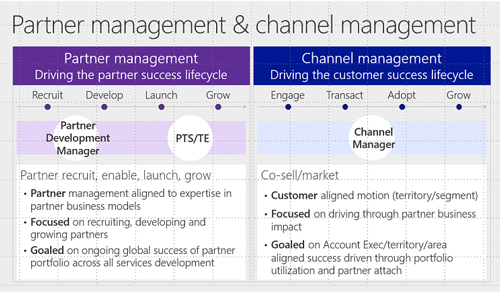Microsoft Partners Forge Ahead Through OCP Turbulence: Part 1
Almost a year into Microsoft's One Commercial Partner (OCP) reorg, and the channel is still learning how to navigate it. Designed to simplify partner engagement that had become fragmented and siloed, the "Build-With," "Go-to-Market" and "Sell-With" motions that form the foundation of partner engagement are coming into focus.
In this post, we share the experiences of partners working with partner development managers and getting a handle on the OCP catalogs.
 [Click on image for larger view.]
[Click on image for larger view.]
"The OCP restructuring has been a little turbulent. To understand it, to feel it all the way down on the field and to make it real, right?" said Ric Opal, vice president SWC Technology Partners. "I chose the word turbulent purposefully because I do feel that much like when you're taking off and you go through the clouds and it's a little bumpy, once you clear sky, it kind of makes sense. I agree with the long game."
The OCP long game is to simplify the partner experience. Over the past several years, Microsoft had responded to the transformation of cloud by segmenting partners. Ironically, the cloud has made the segmentation of partners less clear. For example, the Cloud Solution Provider (CSP) program basically turns all VARs, SIs and MSPs into ISVs. CSP program partners must have well-defined solutions, preferably with unique IP -- just like a traditional ISV. Partners are not segmented by type in the OCP models.
The lead in simplifying the partner journey in the OCP world is the partner development manager (PDM), whose role is to help their partners navigate the ocean of Microsoft resources. The concept seems to be working -- at least for those partners lucky enough to be managed.
"That PDM is the person who has my back. So that's my north star, that's my ship captain. I try not to worry about all of the gyrations in the silos that exist from a Microsoft prospective," said Opal. "I'm working hand in hand with a PDM. I think one of the things the partners have asked for a long time, right, is a simpler, easier relationship."
"We're managed, so we have a PDM and I have to say -- and I've given these compliments to Microsoft, as well -- that the people that they put in these roles, it's really spot-on," said Christine Bongard, president of IAMCP WIT and director of partner alliances at Axispoint Technology Solutions Group (ATSG). "They really nailed it with this role. This person, and I believe it's across the board, not just the candidate that we have, the caliber of the person is well-aligned strategically with helping me with my business. From Day 1, I've been impressed, and have come to really appreciate the relationship in a whole new way."
The OCP Catalog
Another core tenet of the OCP engagement model is centralizing and listing partner solutions in industry and functional maps or "catalogs." The role of channel manager revolves around building, prioritizing and sharing the catalogs with Microsoft inside sales and field teams. Conceptually, channel managers will ensure that the best partner solutions rise to the top of the list so that Microsoft personnel can connect customers with the cream of the channel.
"That's been working out really great. The whole catalog, the One Commercial Partner catalog, I think it's going to be very interesting to see where that goes," said Bongard. "Our PDM, Paul, is trying to help us differentiate ourselves in that catalog. I think everywhere you go, you're hearing people use that word. Unique IP. Differentiation."
"It is critical, because you're going to take 300,000 partners, or however many partners there are, that are all going to enter into this catalog and it's going to be chaos," continued Bongard. "It's like a race to put the flag in the ground. And it's not just put it there and keep it there, but it's put it there and keep updating it constantly, because you want to always be seen fresh, ahead of the pack, and as the best solution possible with regard to each of the technologies."
Bongard echoes a common concern in the channel. The status and rollout of the catalogs has been less than clear so far. Reportedly, confusion around ownership and management of catalogs has slowed down the process. Without real clarity in who will use the catalogs and how they will be prioritized, it is no surprise that some partners are reluctant to invest too much time in the process.
"I know that we're supposed to be putting all these solutions in, right? But I'm hesitant to overload it with data," said Opal. "Eventually, the receiver of the catalog has 150 choices to pick from -- who's going to be the best security partner to do an Intune deployment? They're not ever going to use it at 100 or 150. They're going find the two or three that they know, and maybe somebody's worked a relationship. I understand it is theoretically smart. I don't know if it's going to work."
The turbulence of the OCP launch is clearly not over yet, especially with the departure of Ron Huddleston, the chief architect of the OCP engagement model. But partners have been down this road before -- it takes time for the dust to settle with reorgs. Partners will adapt and keep moving forward.
How is the OCP engagement model impacting your business? Send me a note and let's share your story.
Posted by Barb Levisay on December 14, 2017